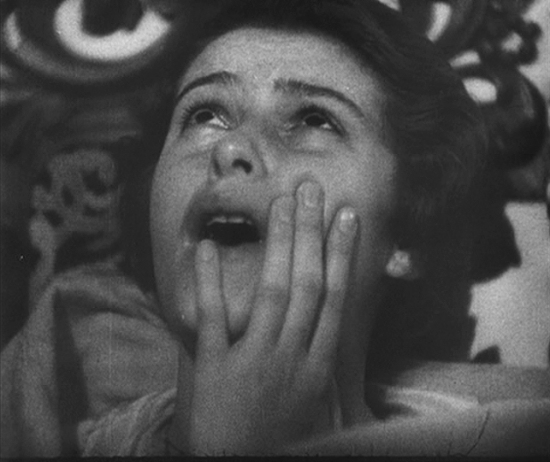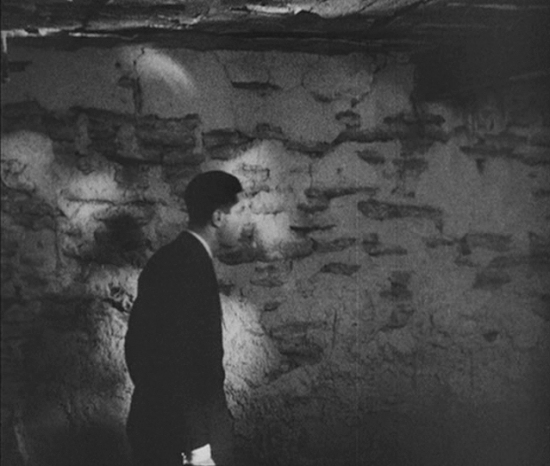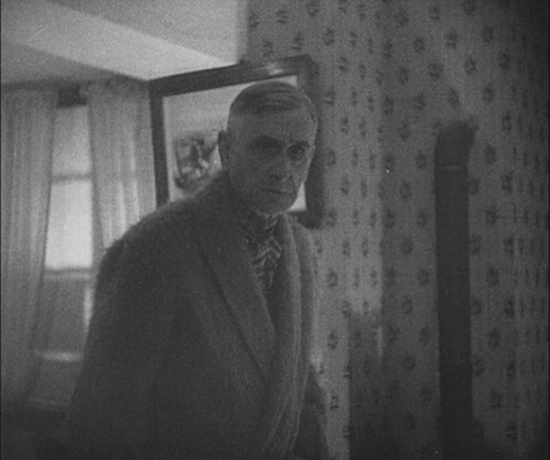
"This is the tale of the strange adventures of young Allan Gray . . . Preoccupied with superstitions of centuries past, he became a dreamer for whom the line between the real and the supernatural became blurred."
It's easy enough to say that Carl Dreyer's 1932 masterpiece Vampyr is dreamlike. Events occur in the film that lead to others on the basis seemingly not of waking logic, but logic based on fears and interests mutual to the viewer and the characters. But the extraordinary thing is that it's not a dream, nor is it a portrait of waking experience, it's a convincing halfway point between the two that emphasises aspects of both worlds for the hero that otherwise would not be clear. Which is not to say that what we're seeing is a metaphorical version of events that are "really" happening. It's more like dream infects reality, reality infects dream, and both do so without regard for linear time. Reality has always been infected, dream has always been infected, and they both always will be entwined.
The protagonist is aptly named, therefore, Gray. He's played by the film's financer, Baron Nicolas de Gunzburg, who may not have been a particularly good actor, but he's perfectly adequate for the task of a man who moves through the film in a wide eyed dream state. The movie tells the story of his battle with an elderly vampire woman in a village called Courtempierre.

Filmed in the early days of sound films, Vampyr was largely conceived of in the cinematic language of silent film, which contributes to its dreamlike quality. When Gray encounters a household where he witnesses a man being murdered, he strikes up a relationship with one of the man's daughters, Gisele, with almost no dialogue. The film takes it as understood that the two become a couple, something that in a silent film would have been customary, but here seems as though the two are bound as it is their natural place as entities in this dream life.

Similarly, the villains of the film show themselves as villains often for reasons that only make emotional sense, as when the doctor who serves the vampire woman angrily tells Gray that there are no children or animals in the village, despite the fact that Gray remarks on hearing both.

It's amazing to think that Dreyer actually thought he was making a movie with mainstream appeal, even when he altered events in the script meant to take place in a marsh to taking place within a mill, just because in scouting locations he came across a place where light filtered inside, playing on the walls like, in his words, "white fire." Perhaps this is the genesis behind the shadows in the film we see moving independent of their owners, signifying that these people are spirit servants of the vampire.

There are two moments in the film that most fascinatingly show the blurring between dreaming and waking reality. The first is when the murdered man visits Gray in his hotel room before they've met, in order to give Gray a parcel which is, the man says, "to be opened after my death."

After Gray sees the man shot, he opens the parcel some time later to find that it is a book about vampires.
The other scene where the two realities intrude on each other most strikingly is when Gray appears to use astral projection, separating his spirit from his body to investigate a ruined castle where he sees himself being buried alive by servants of the vampire. This gives Gray information as to the whereabouts of the vampire, expressing an apparent connexion between the two ideas composed entirely of fear. The coffin may be the vampire's natural habitat, but the terrible quality it has to a living man connects it somehow to the evil the vampire represents.

The movie was supposedly based on le Fanu's "Carmilla", but there's actually a great deal more resemblance to Dracula in the two young women of the film, who seem more like Mina and Lucy than Laura and Carmilla, particularly when Leone, the sister infected with vampirism, sleepwalks to a place where the elderly vampire is feeding on her when Gisele and Gray find them, upon which the vampire flees.

The movie's complex use of the supernatural and the dead around the central vampire is closer to Dracula as well than it is to "Carmilla". As is the use of human servants of the vampire, one of whom provides poison for Leone which Gray learns of in an amazing vision of a skeleton holding a poison bottle.

The beautifully and ingeniously shot film altogether conveys a sense of a dark cloud of fear and anger surrounding death as a concept, secretly permeating reality, perceptible to one gifted with sight like Gray's.
The Criterion edition of the movie comes with some nice special features, as usual, including a documentary/interview with Dreyer made in 1966. It contains footage of Dreyer meeting a number of great European filmmakers from the 1960s including Henri-Georges Clouzot and Francois Truffaut. We also see him meet Jean-Luc Godard and Anna Karina, a fascinating moment considering how Godard had shot Karina in close up in Vivre sa vie, crying as she watched on screen Dreyer's La Passion de Jeanne d'Arc, in which Dreyer had shot his protagonist crying in close up.

It's a vivid reflection of Dreyer's influence. However unsuccessful Jeanne d'Arc and Vampyr may have been in their initial release, one appreciates when Truffaut says in the documentary that the relatively few films Dreyer was able to make in his lifetime were immensely important parts of cinema history because Dreyer never compromised his vision.

No comments:
Post a Comment